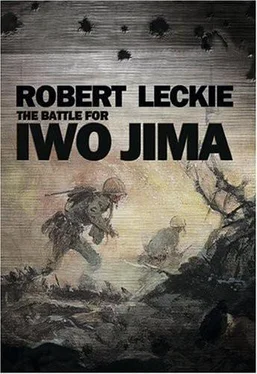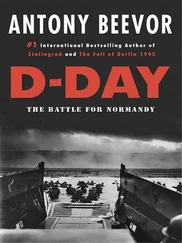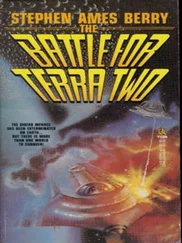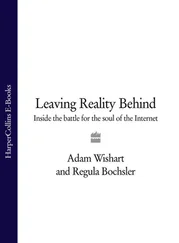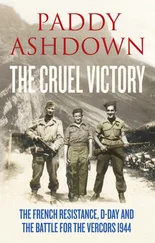Still General Kuribayashi was determined to fight on. He radioed Tokyo: “I am not afraid of the fighting power of only three American Marine divisions, if there are no bombardments from aircraft and warships.”
However, the American bombardments were continuous. But in spite of them, the Japanese commander had managed to inflict the worst casualties of the war on the attacking Marines. During two terrible weeks the Americans had lost 3,000 killed and 13,000 wounded. They did not know yet that they had cracked through the enemy’s strongest defenses. All that they could see was that nearly half the island was still in Japanese hands.
Now that the Americans had taken more than half of Iwo Jima they discovered that “Sulphur Island” was indeed as strange as it was ugly.
At the southern end of the island and around the airfields, Marines still shivered in their foxholes at night. But farther north they had come to the Japanese sulphur wells. Here, General Smith said, “it looked like something left over when they finished building Hell.”
The air was foul with the smell of sulphur. Sulphur mists rising to the surface had stained the earth dead white and pale yellow. Marines could scarcely dig a foxhole without starting a sulphur bath. They could cook a can of C rations by burying it in the earth for a quarter-hour. When they wanted to make coffee, they took their canteens to the sulphur wells. Sometimes the temperature of the water rising to the surface was 160 or 170 degrees.
As usual, the Marines took oddities like these in their stride. They had fought and won campaigns in the malarial swamps and jungles of the Solomons, and on the blistering-hot coral atolls of the Gilberts and Marshalls and Carolines. They knew that they would do the same on this peculiar, cold-hot hump of sand and rock. On March 4, it appeared that General Kuribayashi was inclined to agree with them. On that day he radioed Tokyo asking for aircraft and warships to come to his aid. “Send me these things,” he said, “and I will hold this island. Without them I cannot hold.”
As the Japanese commander might have suspected, he was not to get either planes or ships, However, on that very same day, his enemy received a wonderful boost for their morale.
During the afternoon of March 4, Radioman William Welsh was monitoring the air-sea rescue frequency aboard the command ship Auburn. He had just finished a crossword puzzle when the loudspeaker overhead suddenly came to life:
“Hello Gatepost, this is Nine Bakecable. We are lost. Give us a bearing.”
“Hello Nine Bakecable, this is Gatepost,” Welsh replied. “Who are you?”
“We are a monster short on fuel. Give us instructions please.”
An officer checked a list of code names and discovered that a “monster” was a B-29. The Superforts had raided Japan only that morning. Obviously, one of the giant bombers was asking for permission to make an emergency landing on Iwo Jima! Excitement ran like an electric shock through the Auburn. At once, aerial transports from the Marianas were warned to keep away from Iwo. Ashore, the emergency field was cleared for the landing of a “big one.”
No more than two weeks after the Marines had first landed on Iwo, the island was beginning to serve its purpose—even with a savage struggle for the island still going on. As the word spread across Iwo, Marines, soldiers and Seabees came running toward the airfield.
Out over the ocean, the B-29 Dinah Might flew through the rain and mist with open bomb-bay doors. That was Dinah Might ’s trouble. The doors would not close, and the wind whistling through the opening had slowed the plane and forced it to consume most of its fuel. When Lieutenant Fred Malo, the pilot, tried to tap the spare tanks he found that the valve would not open. For Dinah Might it was Iwo or the Ocean.
Now Sergeant James Cox, Dinah Might ’s radioman, was getting a bearing from Auburn. “Course 167 for 28 miles,” Welsh instructed him. “Do you prefer to ditch offshore or try to land on the strip?”
“We prefer to land.”
“Roger. We will have the field cleared for you.”
Soon Lieutenant Malo sighted Iwo Jima. It was a tiny speck in the sea, growing to cinder size, then larger… larger…. Twice Malo circled the island. Each time the narrow runway slid out of sight. On the third pass he hit the runway squarely. The 60-ton aircraft whacked the matting with a whhhumphf! like an exploding shell. Then it was whizzing between lanes of wildly cheering Americans, its left wing cutting down a telephone pole like a sickle slicing straw, its roaring motors whipping up a huge cloud of dust. When the dust settled, Dinah Might stood safely at the end of the runway. Lieutenant Malo and his men were the first of many B-29 crews to land on Iwo. A total of 2,251 Superforts, carrying 24,61 Americans, were saved by emergency landings on this tiny island.
That was the value of Iwo. And for the first time during the war, the value of an objective had been made evident even before it was taken.
The day after Dinah Might ’s dramatic landing, the Marines on Iwo Jima rested. General Schmidt gave his tired men a “day off.” They read letters, ate hot “chow,” and where possible they scrubbed Iwo’s gritty gray grime off their bodies or treated themselves to the luxury of a shave. In the meantime, the divisions reorganized. Generals Schmidt and Smith had decided on a coordinated attack the next day by all three divisions. This, they hoped, would break through Kuribayashi’s last line and bring a quick victory.
The quest for quick victory had brought the Marines back to the assault again and again. The sooner the island was won the sooner the invasion fleet could be released for duty elsewhere. Victory would gain more airfields to provide fighter cover for the B-29s bombing Japan. It would provide flank cover for the invasion of Okinawa, thus speeding up the timetable of conquest.
In wartime the attempt to achieve a quick victory may seem a needless sacrifice of lives, but in the long run it saves lives. The rapid conquest of lower Iwo Jima with its big airfield had already begun to save American airmen and their valuable B-29s.
So on the morning of March 6 the heaviest bombardment of the campaign was begun. It was devastating. All the guns ashore and at sea blasted away. In 67 minutes the Marines fired 22,500 shells of all sizes at the enemy positions. A battleship and two cruisers added 50 rounds of huge 14-inchers and 400 rounds of 5-inch shells. Three destroyers and two landing ships also opened up, and from the carriers came aircraft dropping bombs and tanks of napalm. It did not seem that the enemy could survive such a rain from the sky.
But they did. When the Marines rose up to attack, they were met by a dreadful hail of enemy fire. Once again they were forced to close in and chase the enemy down his warrens of rock and concrete, along his underground burrows and right into his formidable blockhouses. The Japanese were simply not going to be blasted into defeat.
While the Marines were struggling to make some more headway, the Army Air Corps began to arrive on the island. Twenty-eight P-51 Mustang fighters and twelve P-61 Black Widow night fighters roared into Iwo. For the second time, the value of quick victory had been demonstrated.
That night, however, the advance was still being measured in bloody “touchdowns.”
The failure of the artillery barrage had convinced General Erskine of the 3 Division that the enemy had to be surprised, not overwhelmed. Erskine realized that the Japanese had skillfully adapted themselves to American assault. When artillery began the onslaught preceding each day’s attack, the enemy soldiers merely ran down into their deepest underground positions to sit out the bombardment. When the fire lifted, they ran back up to their guns to greet the advancing Marines with shot and shell. They had done it so often that they could now do it with split-second timing. As a result, the barrages were next to worthless.
Читать дальше
